Powdery mildew is a fungal disease affecting various food crops, flowers, and ornamental plants. It is quite common and can be caused by many different types of fungus. As the name implies, powdery mildew (often abbreviated to “PM”) looks like white powdery mold spots on plant leaves. Some spots are usually not a big deal, although modern infections can cause stress and damage plants.
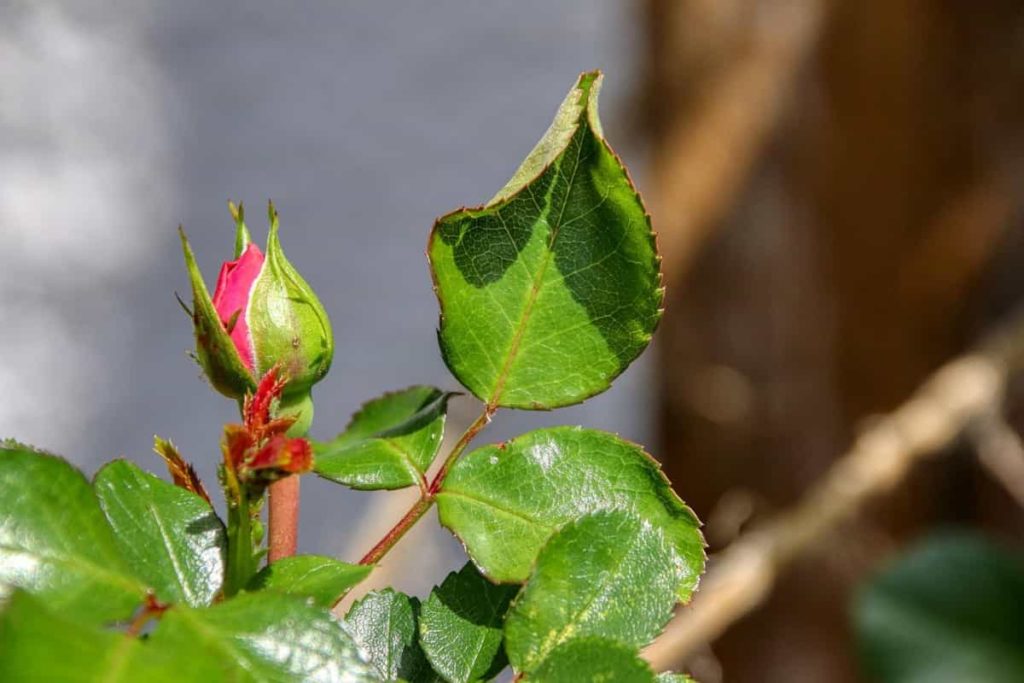
Powdery mildew thrives in contrast to the conditions where you find normal mildew. Instead of preferring wet and humid conditions, powdery mildew prefers a warm and dry environment. When it does appear, it is often thought of as dust or dirt and can be removed with your finger – then it comes back. It appears as gray or light white spots on the plant leaves, stems, new growth, flowers, and even on the top and bottom of fruits or vegetables. Let’s check out how to identify powdery mildew below.
The disease of powdery mildew is so common, widespread, and ever-present that the total damage to plant growth and crop production is likely to be greater than the damage caused by any other single plant disease. Powdery mildew does not usually kill its host but interferes with the normal growth of plants by using host nutrients, reducing photosynthesis, increasing transpiration, and increasing respiration.
Causes of powdery mildew on plants
Powdery mildew is formed when the plants are dry, the light is low, the temperature is mild, and the humidity is high. Ideal conditions for powdery mildew development often occur in late spring or early summer when the evenings are cool but the days are warmer. Therefore, powdery mildew is a common summer problem on many vegetables and cut flowers.
But most powdered mildew can be prevented or treated with cheap home remedies that have proven better or better than commercial fungicides. Powdery mildew, common in mid-summer on Zinnia and other crops, starts with just a few spots on the lower leaves. It will spread to twigs and buds and eventually kill the plant without treatment.
In case you missed it: Okra Pests, Diseases, Symptoms, And Control Measures
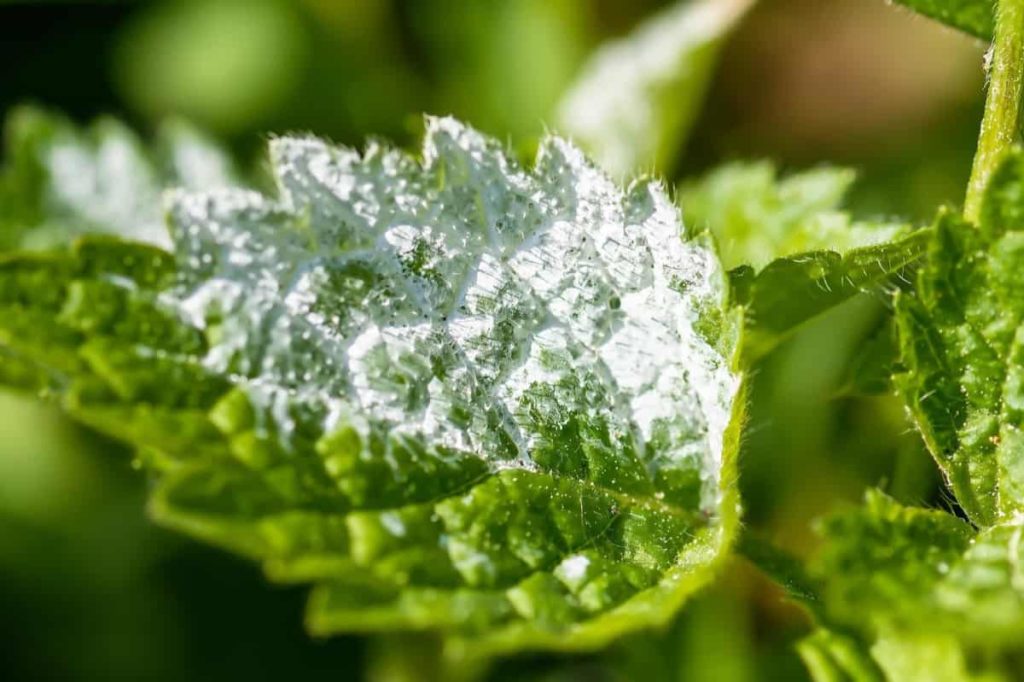
Plants that are affected by powdery mildew
Many fungi cause powdery mildew, each affecting different groups of plants. The main plants that are affected by powdery mildew include;
- Vegetables – Cucumbers, Cucumbers, Lettuce, Melons, Parsley, Pumpkins, and Potatoes.
- Flowers – Chrysanthemum, Begonia, Dahlia, Phlox, Sunflower, and Xenia.
- Nine other powdery mildew fungi affect Cole Crops, Peas, Eggplants, Peppers, Tomatoes, Strawberries, Beans, Black-Eyed Peas, Grapes, and tree fruits.
No plants are entirely protected from powdery mildew, including vegetables, roses, trees, and shrubs.
How do powdery mildew harm plants?
The good news is that powdery mildew disease is rarely lethal to plants. But just because it’s not fatal doesn’t mean you shouldn’t check it. Initially, a few minor spots aren’t doing much damage to the host plant, but they can spread the spores to other plants or stay in your garden soil. As the disease progresses, the fungus eats and robs nutrients from the plant, making them more or less productive.
When powdery mildew envelops a significant portion of the leaves, it can inhibit photosynthesis. It’s basically like a slow appetite for plants. Changes in photosynthesis can also affect the crop’s taste as the plant will produce less sugar. Last but not least, powdery mildew infections cause stress on the plant, and the pressure plant is more susceptible to damage by other diseases or pests.
How to identify Powdery Mildew disease: Signs
The first thing to know about identifying powdery mildew is that it is pretty different from Downy mildew despite some similarities in appearance. Both produce large numbers of light-colored masses of spores on plants. However, downy mildew grows only on the underside of the leaves, while powdery mildew appears on both sides of the leaves and the shoots, buds, and sometimes the flowers.
Furthermore, Downy mildew is a disease that appears in cold, wet conditions and is usually prevented by hot, dry, windy weather. Powdery mildew thrives when the plants are dry, and the weather is hot. The wind spreads the spores to other plants. Powdery mildew spores do not germinate or germinate when the plants are wet, so overhead watering is sometimes recommended as a precaution against highly susceptible crops.
In case you missed it: Ginger Diseases, Pests, Symptoms, And Control
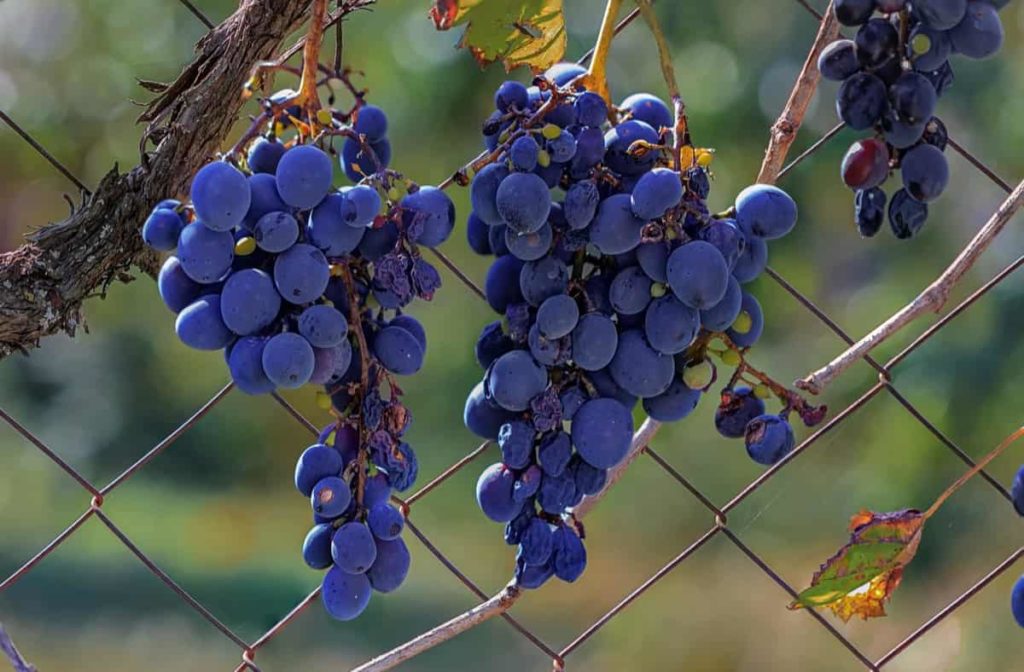
Powdery mildew spores are found in winter in perennial crops such as Grapes, Raspberries, Strawberries, fruit trees, or plant debris leftover from the previous year. This year’s growth could be affected when conditions are right, and the disease could spread rapidly. The best conditions for disease development are hot, dry days followed by cold, humid nights.
If left untreated, powdery mildew will cause the leaves to turn yellow, die and fall off, fruits and vegetables exposed to the sun, and cut flowers to become unmarketable. However, preventive measures in sensitive crops and regular scouting can prevent the catastrophic spread of the disease.
Powdery mildew on plants is identified as light gray or white, dusty spots, or blotches. They are usually round, fuzzy, and sometimes slightly elevated. You will first see spots on the tops of plant leaves. On closer inspection (or as the infection progresses), you may find mold on the stems, under the leaves, on the flowers, and sometimes on the fruits or vegetables themselves. A severe case of powdery mildew makes the plant look like it has been washed in powdered sugar or flour. Affected leaves may eventually turn yellow and dry.
Other signs for identifying powdery mildew disease are;
- Powdery mildew is one of the simplest diseases of plants. The first signs of problems are usually white, powdery spots or spots on the upper part of the leaves or the stems. The powdery surface growth gradually spreads to cover the entire leaf, including the underside, until the plant appears to be covered with white powder dust.
- Affected leaves turn yellow and curved.
- New shoots and buds have damaged growth.
- Flowers and fruits are usually protected from white fungus, but infected plants have low yields and poor-quality fruit.
- Plants infected with powdery mildew disease look like they have been dusted off.
- Powdery mildew usually starts as round, powdery white spots, which may appear on leaves, stems, and sometimes fruits.
- Powdery mildew covers the upper part of the leaves and spreads downwards.
- Young plants are most at risk of damage. The leaves turn yellow and dry out. Some leaves can be twisted, broken, or damaged by the fungus.
- White color spots of powdery mildew disease will spread to most leaves or affected areas.
- Leaves, buds, and growing signs will also be disfigured. These symptoms appear late in the growing season.
In case you missed it: Turmeric Diseases, Pests, Symptoms, Control Measures
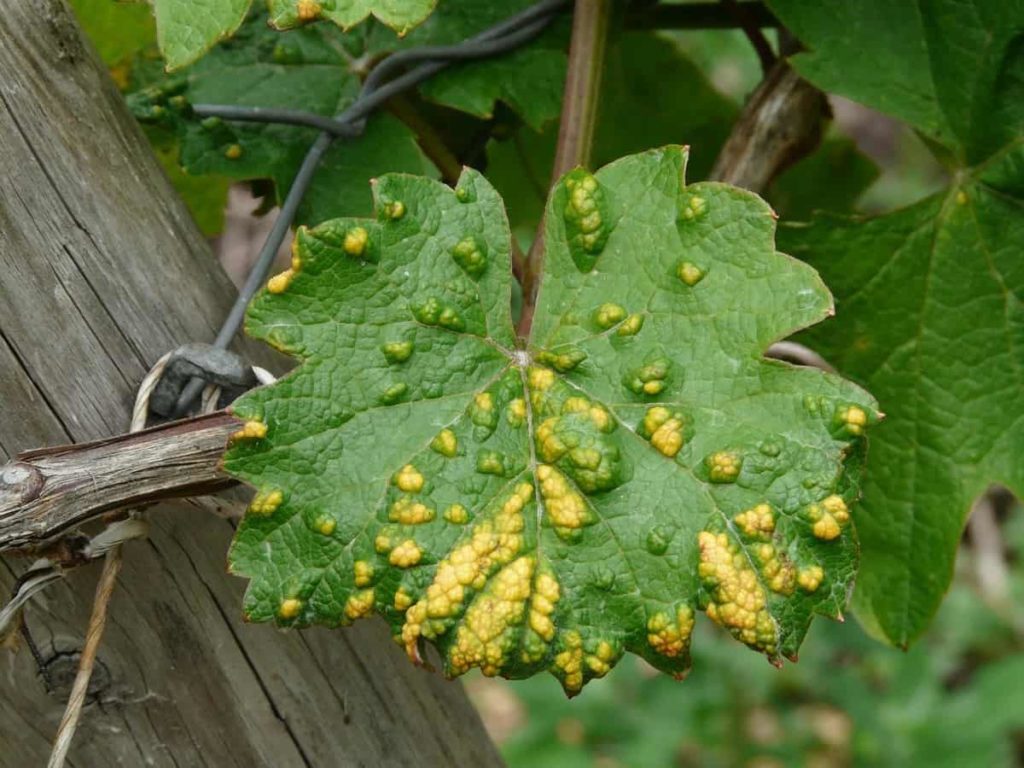
Steps to take to prevent powdery mildew disease
The defense against this disease is to follow best practices to maintain an environment that does not encourage disease growth. One method to prevent powdery mildew is to plant varieties resistant to mildew. If this is not an option, however, there are a few more steps to take;
1. Provide air circulation: Proper air circulation will prevent powdery mildew. Providing air circulation is accomplished by properly spacing the plants. When planting seeds or transplants, consider how much space the plant or tree will need to grow fully. Crowded plants will have less air circulation. Ensure enough space between your plants to allow enough airflow around all plant parts.
2. Provide light: Choose planting locations where the plants receive at least six hours of direct sunlight daily. Prune trees that are blocking light for powdery mildew plants.
3. Don’t over-fertilize: New growth powder is more susceptible to mildew, so a plant that grows vigorously – too hard – weakens. A slow-release fertilizer that provides plants with small amounts of nutrients over time will provide more controlled growth.
4. Make sure the soil can drain properly. Inadequate drainage can make the soil a breeding ground for disease-causing organisms.
5. Use compost to increase nutrient levels in the soil, which will increase the population of beneficial microorganisms.
In case you missed it: Nutrient Deficiency Symptoms in Plants – A Full Guide
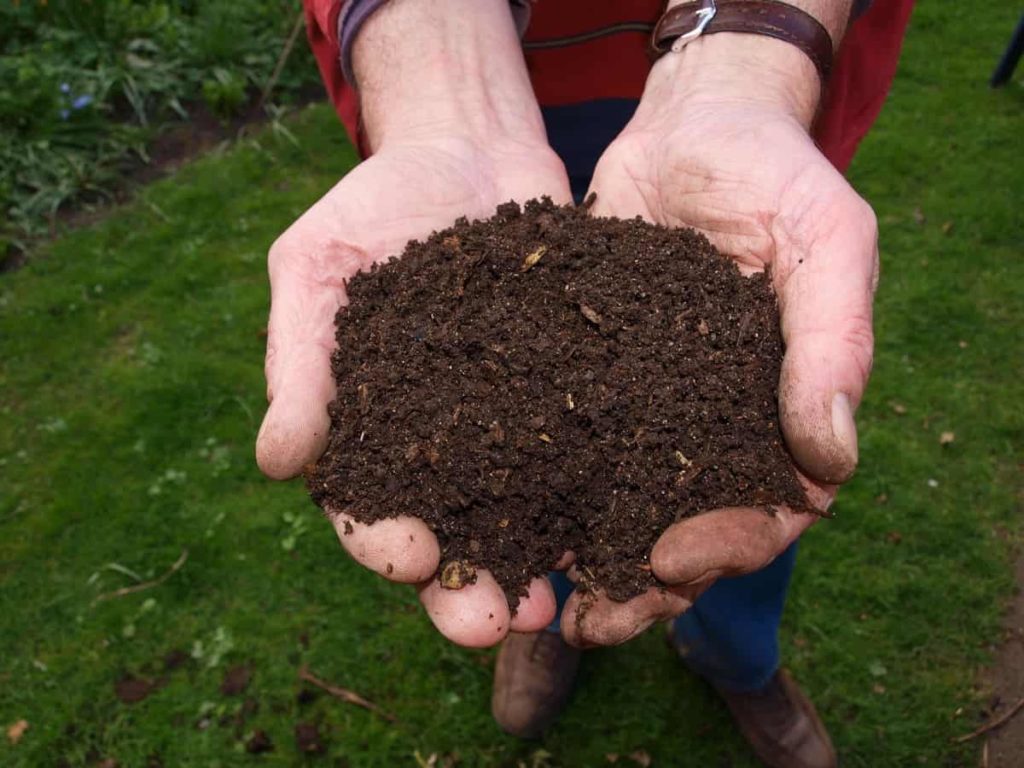
6. Take proper care of plants by removing dead or diseased plants and stems.
7. Use preventive treatment options, such as sulfur fungicide, before powdery mildew develops.
8. Choose healthy plants and work to keep them that way. Stressful plants (drought, excess water, or other poor growth conditions) invite disease.
9. Buy crops resistant to powdery mildew – This is especially important if you are gardening in an area considered susceptible to an annual infestation of powdery mildew.
10. Avoid planting sensitive plant species in the shade where they can stay wet and provide the spores an ideal place to grow.
Tips for controlling powdery mildew
- Baking soda – Baking soda itself is not usually effective as a powdery mildew treatment, but when combined with liquid soap and water, it can be a powerful weapon. It is usually the most beneficial if used as a preventative measure rather than a cure. Mix approximately one tablespoon of baking soda and one and a half teaspoons of liquid, non-detergent soap with an amount of water, and then spray the mixture freely on the plants.
- Promote healthy plants and the immune system – By providing plants with the nutrients and conditions they need to grow large and strong, they are just as resilient to disease – including mold. To make our garden feel fresh, routinely replace garden soil with organic fertilizers and good old manure and homemade fertilizer with tea and aloe vera juice. In addition, have a regular watering schedule and avoid drought stress.
- Practice a good plant spacing – PM grows in humid, crowded conditions. Prevent powdery mildew from spreading among plants and reduce overcrowding. Follow the spacing recommendations for each type of plant, and prune the plants as needed to increase airflow and reduce contact between them. Mildew also grows more easily in the shade, providing plenty of sunlight to sensitive plants.
- Clean your garden tools – It is always good to regularly clean your garden tools (such as pruning scissors), especially when working around diseased plants. To prevent the spread of powdery mildew, use abrasive alcohol, white vinegar, hydrogen peroxide, dilute bleach, or some other sanitizing agent to clean your tools before moving on to the next plant.
- Resistance – Genetic resistance is very effective in controlling powdery mildew but is unavailable to all plants. Examples of plants that survive the powdery mildew are phlox ‘David,’ New England aster ‘Purple Dome,’ beebalm ‘Marshall’s Delight,’ and crabapple ‘Indian Summer.
- Potassium bicarbonate: It kills mildew spores quickly and is also approved for organic growth. Oil is not essential when using potassium bicarbonate to control mildew. Instead, mix only half a teaspoon of liquid soap with a gallon of water, then stir in 1 tablespoon of potassium bicarbonate and spray lightly on the leaves.
- Sulfur: Disease spores cannot be formed in direct contact with sulfur. Sulfur fungicide, approved for organic gardening, can be sprayed by mixing it with dust or water when dry.
- Fungicides can be used to control the infection, although this drastic measure is not required in many cases of powdery mildew. Because fungus spreads rapidly, it is essential to use fungicides at the first sign of illness. Be sure to prune severely affected branches first. Sulfur can be used as a spray, but it can cause other types of damage to plants – especially at high temperatures – if not used carefully.
In case you missed it: Fall Armyworm Control Methods and Symptoms
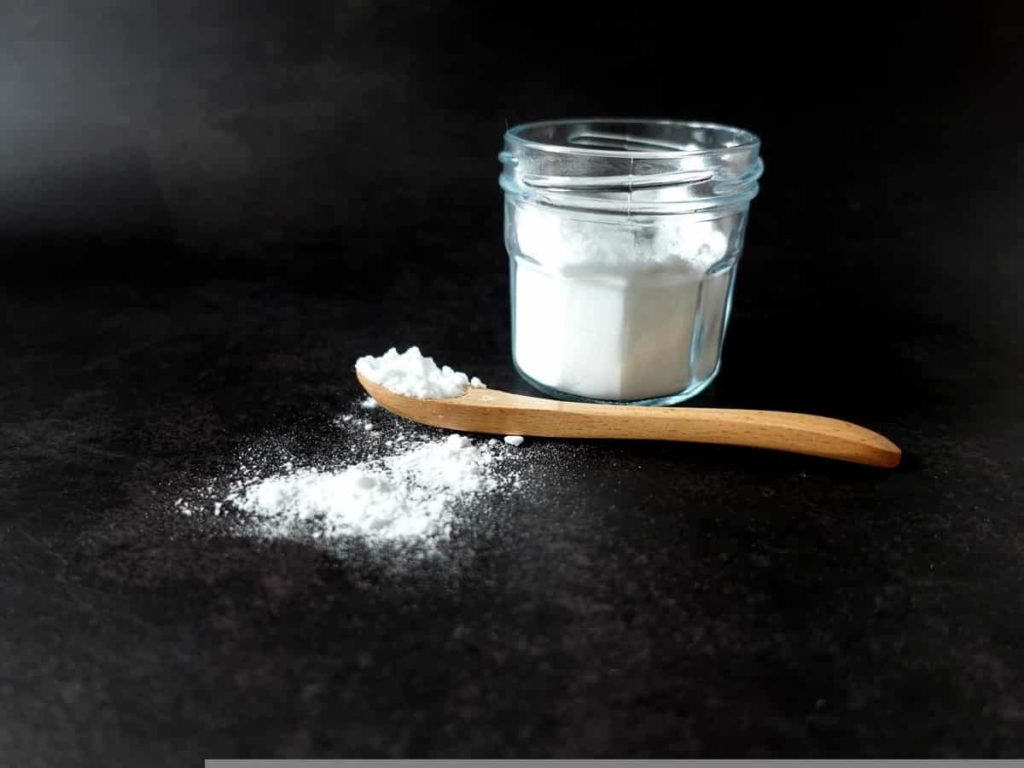
Organic tips for controlling powdery mildew disease
- Use neem oil, which is a commercially available organic treatment. Both treat the existing powdery mildew and protect the plant from further infection.
- Organic fungicide treatment – Several commercial treatment options are approved for eco-friendliness. You also know what kind of treatment the pest will kill and what kind of plants it is most helpful.
- Effective organic fungicides for powdery mildew treatment include sulfur, lime sulfur, neem oil, and potassium bicarbonate. They are most effective when used before infection or when you first see the symptoms of the disease.
- Many gardeners have found baking soda to be effective in treating powdery mildew. Mix about one teaspoon of baking soda in 1 quart of water. Spray the plants well, as the solution will only kill the fungus.
- As a precautionary measure, spray milk on your plants. Milk spray is another effective home remedy. Dilute the milk with water (usually 1:10) and spray on the rose at the first sign of infection or as a precaution.
Frequently asked questions about powdery mildew disease (FAQ)
Which fungicide is best for powdery mildew?
Chlorothalonil has been the primary protective fungicide used for powdery mildew. Copper fungicides and sulfur have also been used to control powdery mildew.
Does Neem oil treat powdery mildew?
Neem oil can control powdery mildew if there has been a disease problem in the garden in previous seasons. If applied to the first symptoms, Neem effectively controls, such as small white spots on the leaves. This natural fungicide works by killing the powdery mildew seeds on the leaves.
Is powdery mildew dangerous in plants?
Powdery mildew is not fatal to plants. Instead, it is an aesthetic problem. However, powdery mildew can leach nutrients from the plant if left untreated, causing the leaves to wither and turn yellow. In addition, it can disfigure flowers and leave vegetables and fruits particularly vulnerable to sunburn. Powdery mildew can ultimately reduce plant productivity and affect the flavors of fruits and vegetables.
How do you get rid of mildew on plants?
To eliminate disease on plants, start making a fungicide spray by mixing 2-3 tablespoons of apple cider vinegar in water (1 gallon)and putting it in a spray bottle. Next, spray another by mixing 12 ounces of milk in 28 ounces of water and putting it in a separate spray bottle.
- Types of Pesticides Used in Agriculture: A Beginner’s Guide
- Economical Aquaculture: A Guide to Low-Budget Fish Farming
- 15 Common Planting Errors That Can Doom Your Fruit Trees
- How to Make Houseplants Bushy: Effective Tips and Ideas
- Innovative Strategies for Boosting Coconut Pollination and Yield
- Pollination Strategies for Maximum Pumpkin Yield
- The Complete Guide to Chicken Fattening: Strategies for Maximum Growth
- Natural Solutions for Tulip Problems: 100% Effective Remedies for Leaf and Bulb-Related Issues
- Revolutionizing Citrus Preservation: Towards a Healthier, Greener Future
- Natural Solutions for Peony Leaf and Flower Problems: 100% Effective Remedies
- Maximizing Profits with Avocado Contract Farming in India: A Comprehensive Guide
- Natural Solutions for Hydrangea Problems: 100% Effective Remedies for Leaf and Flowers
- The Ultimate Guide to Choosing the Perfect Foliage Friend: Bringing Life Indoors
- From Sunlight to Sustainability: 15 Ways to Use Solar Technology in Agriculture
- The Ultimate Guide to Dong Tao Chicken: Exploring from History to Raising
- The Eco-Friendly Makeover: How to Convert Your Unused Swimming Pool into a Fish Pond
- Mastering the Art of Delaware Chicken Farming: Essentials for Healthy Backyard Flocks
- 20 Best Homemade Fertilizers for Money Plant: DIY Recipes and Application Methods
- How to Craft a Comprehensive Free-Range Chicken Farming Business Plan
- Brighten Your Flock: Raising Easter Egger Chickens for Beauty and Bounty
- How to Optimize Your Poultry Egg Farm Business Plan with These Strategies
- Subsidy for Spirulina Cultivation: How Indian Government Schemes Encouraging Spirulina Farmers
- Ultimate Guide to Raising Dominique Chickens: Breeding, Feeding, Egg-Production, and Care
- Mastering the Art of Raising Jersey Giant Chickens: Care, Feeding, and More
- Ultimate Guide to Raising Legbar Chickens: Breeding, Farming Practices, Diet, Egg-Production
- How to Raise Welsummer Chickens: A Comprehensive Guide for Beginners
- How to Protect Indoor Plants in Winter: A Comprehensive Guide
- Ultimate Guide to Grow Bag Gardening: Tips, Tricks, and Planting Ideas for Urban Gardeners
- Guide to Lotus Cultivation: How to Propagate, Plant, Grow, Care, Cost, and Profit
- Agriculture Drone Subsidy Scheme: Government Kisan Subsidy, License, and How to Apply Online
- Ultimate Guide to Raising Araucana Chickens: Breed Profile, Farming Economics, Diet, and Care
- Bringing Hydroponics to Classroom: Importance, Benefits of Learning for School Students
- Ultimate Guide to Raising Polish Chickens: Breed Profile, Farming Economics, Diet, and Care
- Ultimate Guide to Raising Australorp Chickens: Profile, Farming Economics, Egg Production, Diet, and Care
- Silkie Chicken Farming: Raising Practices, Varieties, Egg Production, Diet, and Care
- Sussex Chicken Farming: Raising Practices, Varieties, Egg Production, Diet and Care